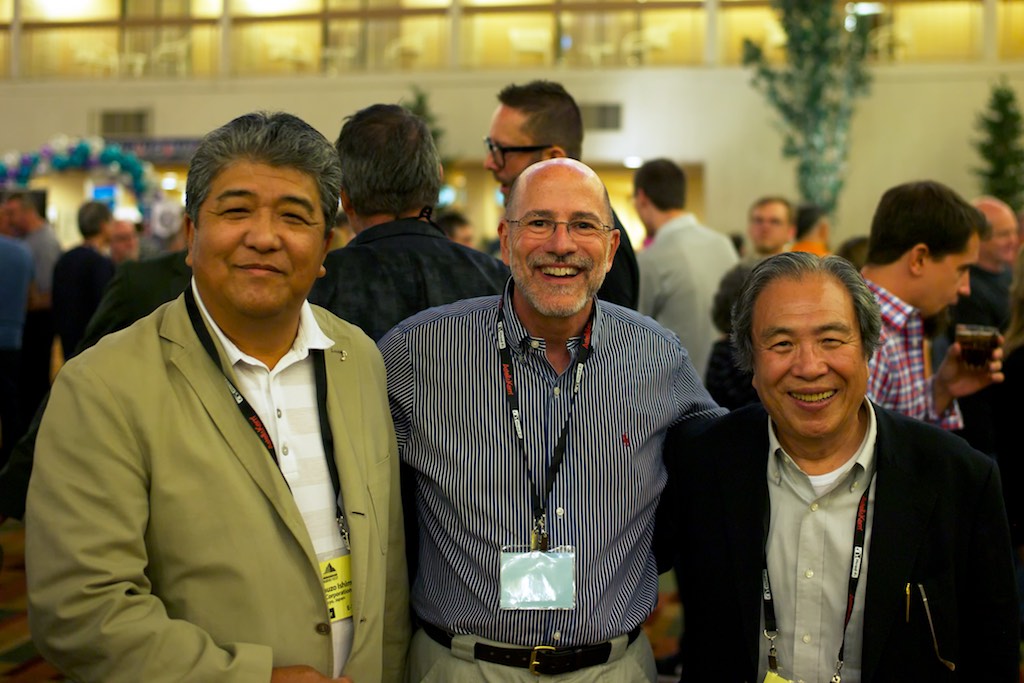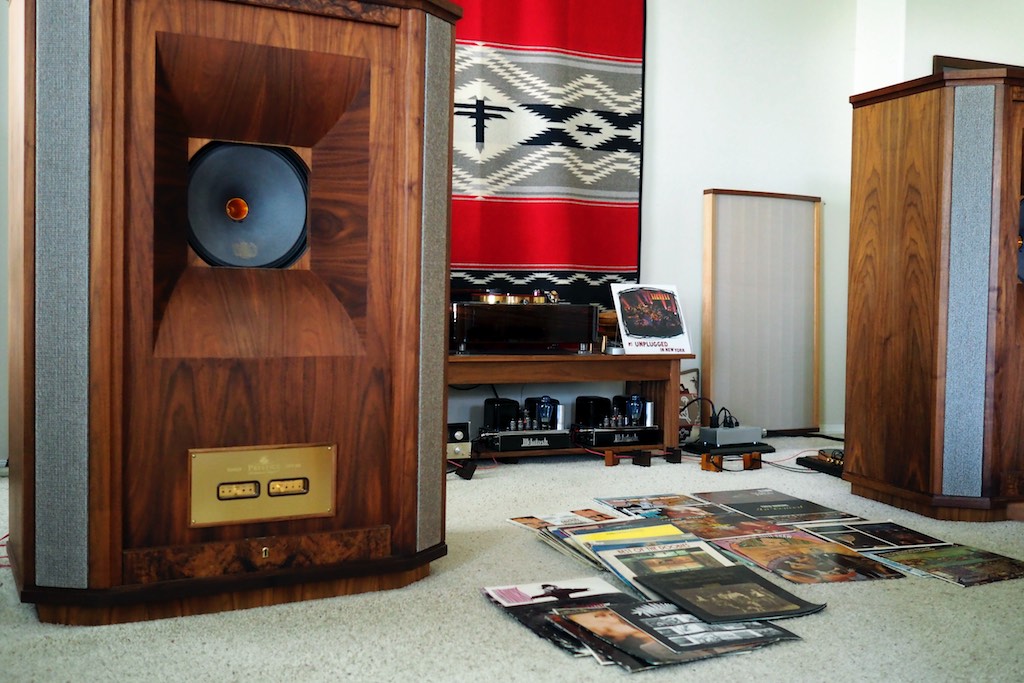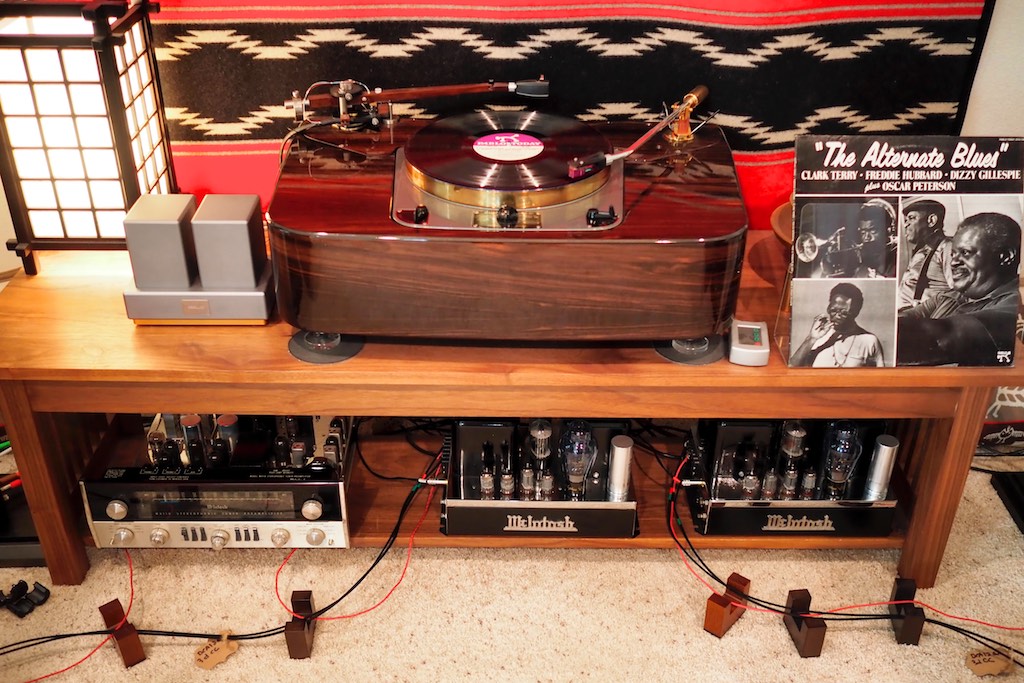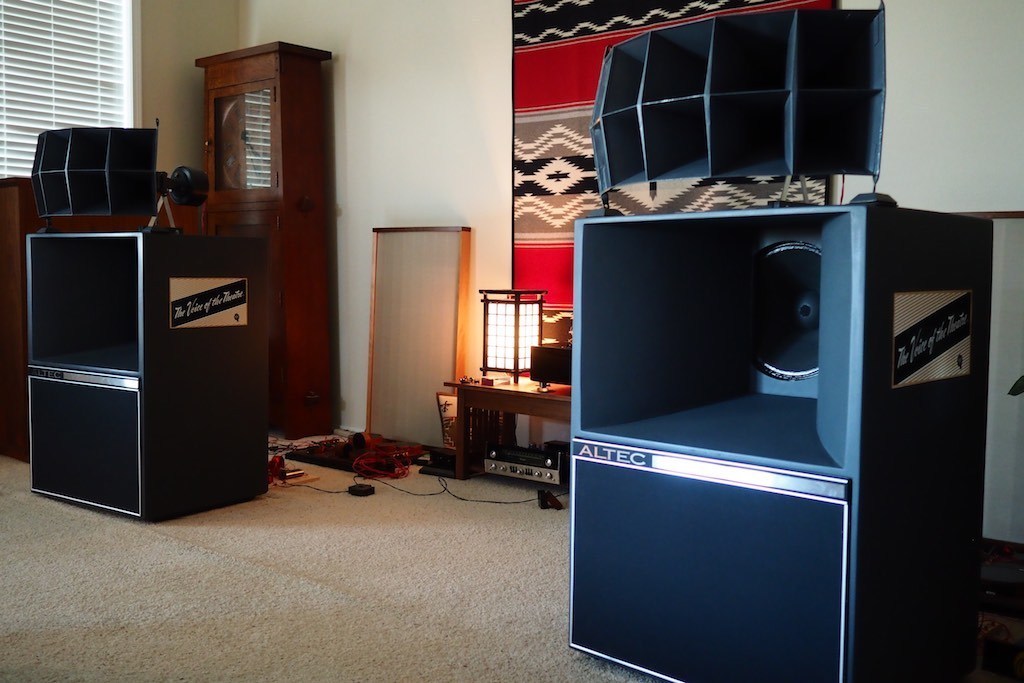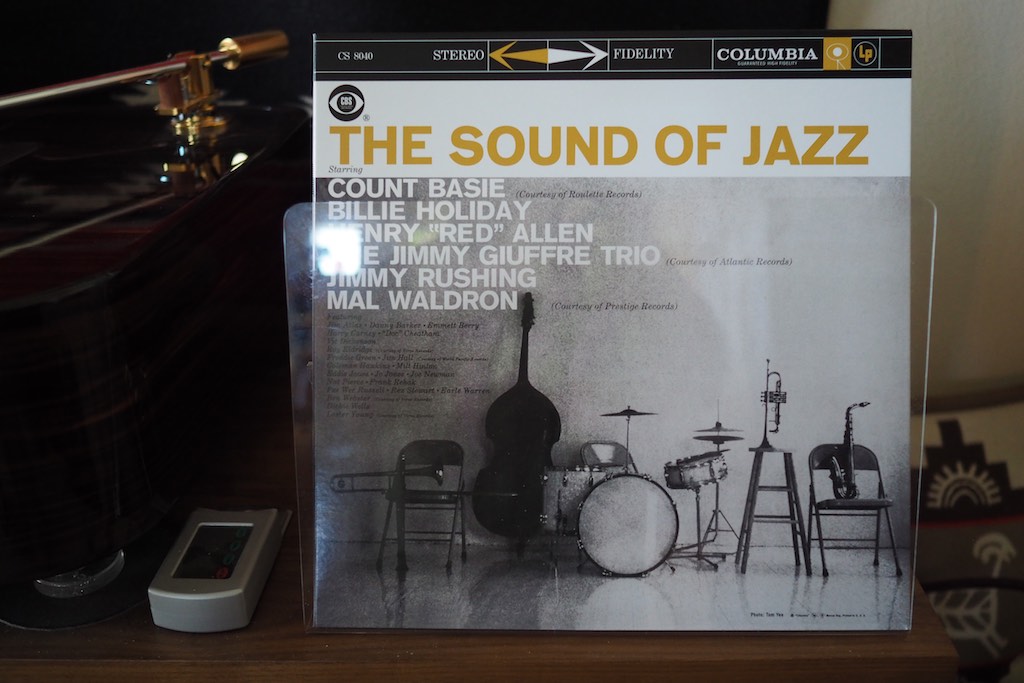This post is not about the vintage-style 22-gauge Gavitt tinned-copper pushback wire from The Art of Tone electric guitar store that I used to build some very musical sounding headshell leads and a USB interconnect from.
Rather, it is about the pursuit of a style of musicality for your hifi that lights up your heart & mind to transport you into a state of musical bliss during listening.
For Yazaki-san, his pursuit of 'Real Sound' as a life-long adventure has brought tremendous long-term satisfaction to his life both as a music lover and a hifi enthusiast.
You might say that Yazaki-san is a master of practicing 'the art of tone' in both his personal and professional hifi adventures to achieve his quest for 'Real Sound'.
I have learned an immense amount from Yazaki-san, and I truly appreciate Yazaki-san sharing his deep insights with us here at Jeff's Place, and he has helped me understand some very important underlying principles in voicing a system so that it matches my tastes in musicality.
There is a deeply knowledgable technical approach, and a great deal of patience over the long term, in Yazaki-san's methods, that move him ever closer to his ideal of 'Real Sound'.
While only a few have a level of technical knowledge that approaches Yazaki-san's, you don't have to have that deep of a technical knowledge to get started applying the underlying principles that Yazaki-san uses in his pursuit of 'Real Sound'.
In fact, you can join in the fun with any hifi system you have at the moment, and start your adventure in pursuing 'the art of tone' in your own life right now.
I'd like to recommend that while we're all pursuing our own personal vision of ultimate musicality, to remember to savor every step of the adventure along the way, and to be patient in letting it come to you.
What is your personal vision for ultimate musicality?
I suppose that "What is your personal vision for ultimate musicality?" is the key underlying question, and that the answer will be a little bit different for everybody based on their personal tastes.
That's as it should be, as there is no absolute sound in music or hifi that is best for everybody, but there may be one that is best for you.
In fact, I also posit, that for me, my ultimate musicality has been an ever evolving personal understanding of what is most important to me when listening to music, with milestones of illumination along the way.
Let me share with you a little about how I've pursued discovering the answer to that ultimate musicality question in my own life, and at times tripping over it.
I'd like to say that it takes time to figure out what is really important to you in both music and hifi, in the same way that it takes time to understand what's important to you with people and relationships, as there's a lot of influences and feelings involved that make things work for you or not.
I've been listening to live and recorded music all my life, nearly six decades now, and I'm still figuring things out, and I suspect I always will be until that final bell tolls.
Listening Unnaturally to Get an Understanding of the Nature of Things
As a hifi writer I tend to listen to music unnaturally in the process of reviewing different audio equipment or modifications to my systems, so I can say something meaningful to you about it, but there is something about the process I go through that I can offer to you that I think will help you understand what's important to you.
Essentially, when I write about hifi, I employ a certain mindfulness practice that helps me evaluate what I'm hearing and how it affects me as a listener.
As a person, my interaction with the world around me involves the six senses of seeing, hearing, smelling, tasting, touching, and the sixth sense of everything else that I experience in my mind.
As a listener of music my senses are all engaged, just as they are with life in general, but with a particular awareness of the senses of seeing, hearing, touching, and the sixth sense of everything else that occurs in my mind and emotions.
As I listen, moment by moment, what I experience while listening gets organized into various perceptions, where I categorize what I'm hearing, with an emotional impression that gets added in, that I feel as a pleasant or unpleasant or neutral sensation.
I try to maintain a bit of a detached perspective on it all while reviewing, so I can describe it all to you in a meaningful way that can help you too experience what I'm hearing, and how it makes me feel.
When I listen, I tend to organize my perceptions into categories both related to the fabric of the music itself, and to the recording artifacts that we hifi nuts generally refer to as sonics.
For example, musically I tend to categorize my perceptions into timbral realism (a band’s signature ‘sound’ & the unique ‘voices’ of particular instruments), melody (the tune you ‘whistle while you work’), harmony (treble & bass accompaniments to the melody), rhythm (the steady beat that determines the tempo), dynamics (variations in loudness), loudness (ability to play at live-like levels for a particular kind of music), tempo (conveys speed and mood of the music), and the resolution of tone color (the chordal variations resulting from adding additional pitches to three tone triads, such as major & minor 6ths, major & minor 7ths, dominant 7ths with flat or sharp fives or nines, major & minor & dominant 9ths, 11th, augmented 11th, 13th, etc., that give different styles of music their 'sound' and the emotional feel), and how close what I'm hearing comes to what I hear with live music.
Sonically, I categorize my perceptions of the non-musical artifacts of the recording process into transparency (being able to ‘see’ into the recording), soundstage (the three dimensions of the recorded space in width, height and depth), soundspace (the acoustic ‘space’ of the soundstage), imaging (the feeling of solidity and localization of instruments & musicians on the soundstage), and resolution (the amount of information recovered from a recording).
Broadly, all of those categories refer to my senses of seeing, hearing, touching (tactile sensations), and that sixth sense of everything else that occurs in my mind and emotions as I listen to the music, and feel it as it flows over me, and I'm immersed in it.
Discovering Pleasure In Listening
In my listening, over time, I have discovered a moment by moment awareness of certain things that I find pleasurable, like a reproduction of instruments that approaches the sound of ‘real’ in terms of tone color resolution, timbral texture, and presence; where the recorded music approaches the sound of ‘real’ in terms of beat, dynamics, tempo, and loudness; and a reproduction of the music that conveys the sense of ‘touch’ and nuance that musicians bring to melodies, harmonies, and rhythm.
The reproduction of music can also go beyond the sound of ‘real’ due to the presence of recording artifacts. Certain types of recording artifacts in complementary amounts can actually increase the brain’s emotional response and our pleasure when listening to music.
The auditory cortex in our brain’s temporal lobe processes auditory information, and is a part of the auditory system that allows us to hear.
The intraparietal sulcus in the right parietal lobe of the brain is outside of the auditory system, and is involved in visuospatial processing, but is also the part of the brain involved in recognizing transposed melodies.
This brain connection in the intraparietal sulcus that does processing for both visuospatial processing and transposing melodies, which is outside of the auditory system, can be stimulated by recording artifacts like imaging, soundstage, and the sense of space, in a way that increases the level of emotion experienced from recorded music.
This indicates that brain networks involved in the emotional response to musicality extend outside of the auditory system, and may help explain why we can get additional pleasure when that brain region is stimulated by processing recording artifacts containing visuospatial information.
Gaining a little understanding about how the underlying neurobiology of how music stimulates emotional responses in the brain have helped me recognize a number of things that I value in my own music listening.
For example, I've found that when my home music systems are able to more realistically reproduce tempos, acoustic roughness (timbral textures), and sudden percussive events (loudness & dynamics), that I tend to find them to be more emotionally stimulating, and more pleasurable to listen to.
I've also found that when my home music systems can play realistically loud at a live-like volume levels, realistically produce timbral textures of instruments & voices, and are able to communicate musical tempos realistically, that I find them more stimulating emotionally, and more pleasurable to listen to.
Additionally, I've found that when my home music systems can more realistically convey beat & rhythm, they more strongly stimulate the instinctive brain mechanism of rhythmic entrainment, allowing my body to respond more rhythmically naturally to the beat in music, as evidenced by tapping my foot to the music, or being stimulated to clap or dance.
Responding to beat is something that is hardwired into our neurobiology, and our brains perceive beat as pleasurable, and I've found that when my home music systems more realistically portray beat they engage me more than home music systems that can’t.
Understanding What You Like
When I'm listening to recorded music during the reviewing process, and I'm feeling the music flowing over me moment by moment in real time, I'm trying to experience and process all those musical & sonic attributes in such a way as to be able to write something about them for you.
That has caused me to think deeply about what I like, and what I value when listening to and experiencing recorded music, and I tend to sort those categories of perception into pleasurable, unpleasant, or neutral, as I experience them, and then try to relate that to you when I tell you about them.
As individuals, when listening to music, I think we all weight the musical & sonic attributes of recorded music a little differently, and the style of musicality for your hifi that lights up your heart & mind to transport you into a state of musical bliss during listening will vary from person to person.
Listening for Enjoyment
I hope that by describing all of what I go through in reviewing, that I've given you some ideas that will help you understand better what you value and find pleasure in when listening to recorded music.
I also want to tell you that when I'm listening to music purely for the pleasure it provides, that essentially all of that ultra-focused mindfulness of the reviewing process gets turned off, and I just let myself drift into the artistic expression of the music as it unfolds, experiencing the emotional pleasure that listening to music brings into my life.
In Pursuit of the Art of Tone!
Audio is such a wonderful hobby, and it is so wonderful listening to the music I love, exploring music that is new to me, and building a music library.
I love pursuing the 'art of tone' in my hifi's, fooling around with hifi gear with my friends, and telling you about it all!
In Part 2 of this discussion I want to tell you more about some of the choices I have made in pursuing my own personal vision for ultimate musicality, and why, and about some of the milestones along the way, and realizations of certain underlying principles that are helping me to get there.
As always, thanks for stopping by, and may the tone be with you!





